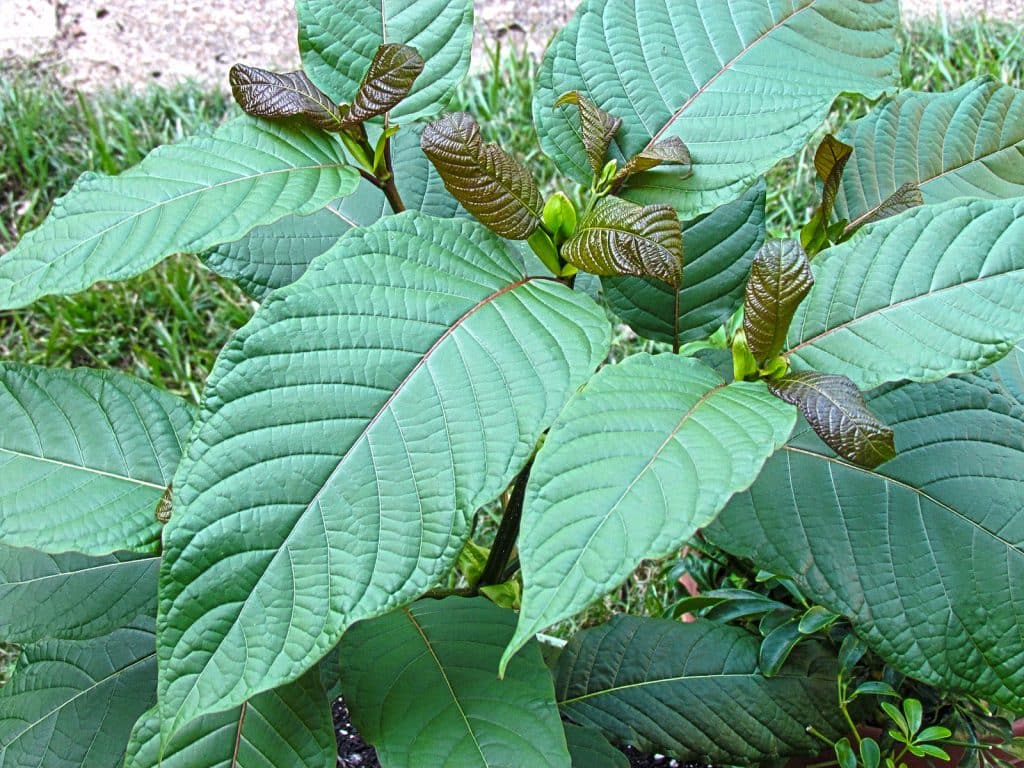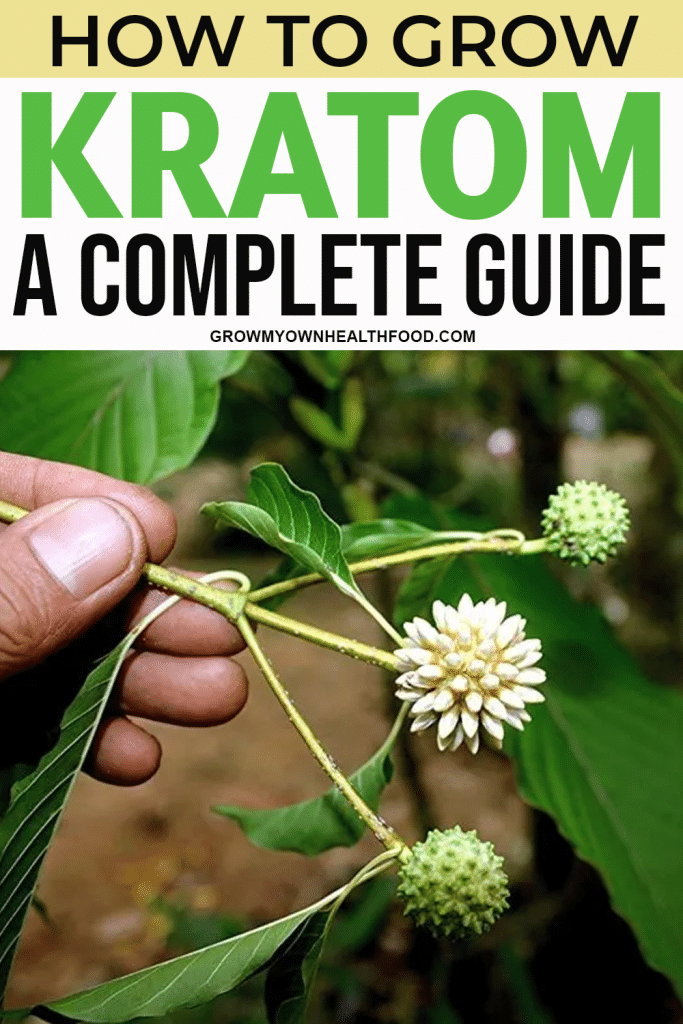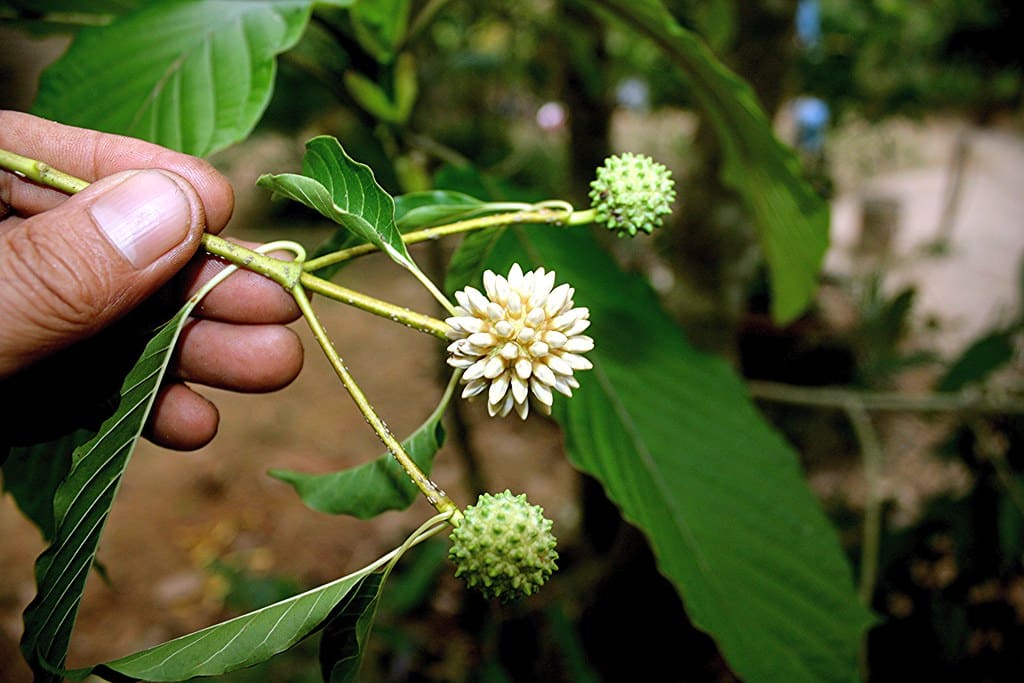Before we get to how to grow Kratom, lets talk about what it does and what it is. Kratom (Mitragyna speciosa) is sold as the crushed-up leaf of the kratom plant, grown in jungles in southeast Asia and now popular all over the Western world. Kratom tea is by far the most popular way the plant is enjoyed, but capsules are also becoming increasingly common. You can buy it at head shops, kratom bars and of course, the internet. The legal “high” it promises is enjoyed by many.
But “high” is perhaps too strong a word for what kratom actually does. This plant is just one of a list of age-old plants and herbal extracts that make people feel a bit livelier, more energetic, a little less stressed. A list that includes chamomile, lavender, lettuce (yes, lettuce), kava, valerian, betel nut – and so on and so forth. The word “medicinal” might be more appropriate. But “high”? That is hyperbole.
What Exactly Is Kratom, Then?

It’s important to note that kratom is not an opiate; the molecule cannot be remotely likened to morphine or heroin. It is just an herb. It is altogether impossible to overdose on kratom. The worst that is likely to occur is a migraine.
The roughly 20 deaths attributed to kratom in recent history are thought to be caused by other drugs. The National Institute on Drug Abuse notes that “commercial forms of kratom are sometimes laced with other compounds that have caused deaths”. And considering the 88,000 deaths per year linked to alcohol and the 28,000 overdose deaths from opiates (heroin and painkillers) in the US alone, the use of kratom hardly qualifies as substance abuse.
Where Does Kratom Come From?
Kratom is found in the rich, fertile soil of the tropical jungles and rainforests on Thailand. The high-humidity and frequent rain showers keep Kratom well-hydrated and thriving: it can grow up to 20-feet tall in the first two years of its life.
To Seed Or Not To Seed . . .

Unfortunately, finding seeds is a matter of considerable difficulty: only about 20% of Kratom seeds germinate, and that is when they are fresh. When you are using dried seeds, you can expect a success rate of about 5%.
In the unlikely event that you do somehow manage to locate fresh seeds, you will need to germinate several of them if they are to have any hope of sprouting. Be sure to purchase a sizeable batch.
Starting with seedlings/cuttings is another option, not in the least because seedlings are far easier to find. However, it is rare that cuttings will root and when they do, they are often stunted and slow to grow alongside being more prone to infections. Rooted plants are your best bet. To find them, you’ll need to do a little lurking on private Kratom reddit forums and the like, but it’ll be worth it.
Soil: Everything You Need To Know
Though Kratom loves the wet, rainy season, it needs well-irrigated, aerated soil to flourish. Yes, you will need to ensure you have got a rich, fertile growing medium for your plant. Striking that hard-to-perfect balance between well-draining and suitably moist if what will really dictate the success of your plant.
If you are working with seeds, you will need more a more moisture-retentive medium as opposed to if you are working with a rooted plant. Initially, you are going to have to stick to a strict watering-regimen. This will ensure your soil remains constantly hydrated and does not dry out. Or else you risk your seeds failing to germinate.
Proper Lighting for Growing Kratom
One of the most important elements in how to grow Kratom is proper lighting. Kratom trees love nothing more than to bask in warm sunlight all day long. So it is important that your tree gets plenty of it. However, if using a cutting/seedling go slow and pace your plant’s exposure to sunlight so as to avoid inadvertently drying it out. If you are growing Kratom indoors, you will also need to make use of indoor growing lights in order to help your tree put out viable new leaves.

Harvesting Your Kratom
Kratom is relatively slow to mature. It can take up to two years and 20+ feet in growth for a plant to attain maturity. However, your tree’s leaves can be harvested within a year. The best time to harvest is ideally right before the leaves begin to fall off.
Mitraygna, the active compound in Kratom leaves is most potent immediately prior to the leaves falling.
Though unusual, Kratom does occasionally flower. Though that is not to be treated as an indication that your tree is ready for harvest. You must only harvest once you have determined that the leaves are entirely developed and do not have any further growing left to do.







